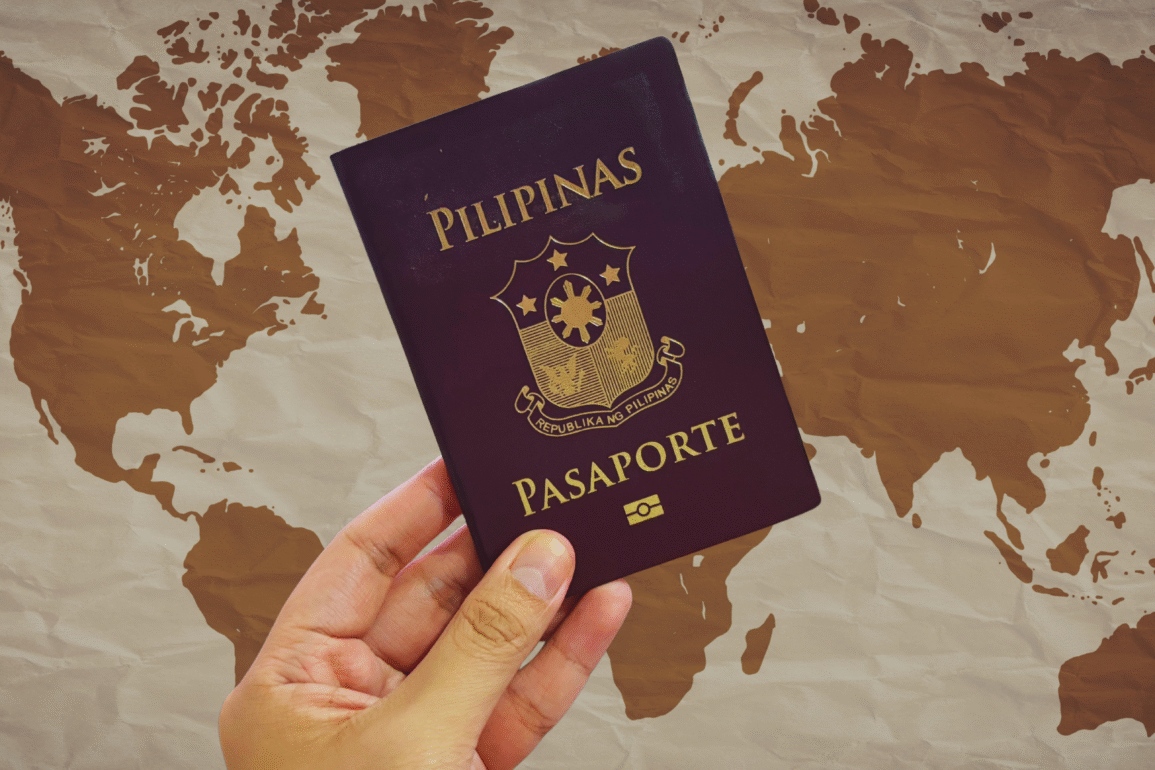Filipinos can now enter 65 countries visa-free, while three of our Asian neighbors enjoy access to 190. Here’s what it really costs us to travel internationally.
In the newly released Henley Passport Index, Singapore once again holds the strongest passport in the world, offering visa-free or visa-on-arrival access to 193 destinations. Japan and South Korea follow closely in second place with access to 190 countries.
Related story: Top 3 European countries to get a Digital Nomad Visa
Related story: The 10 most liveable cities in 2025
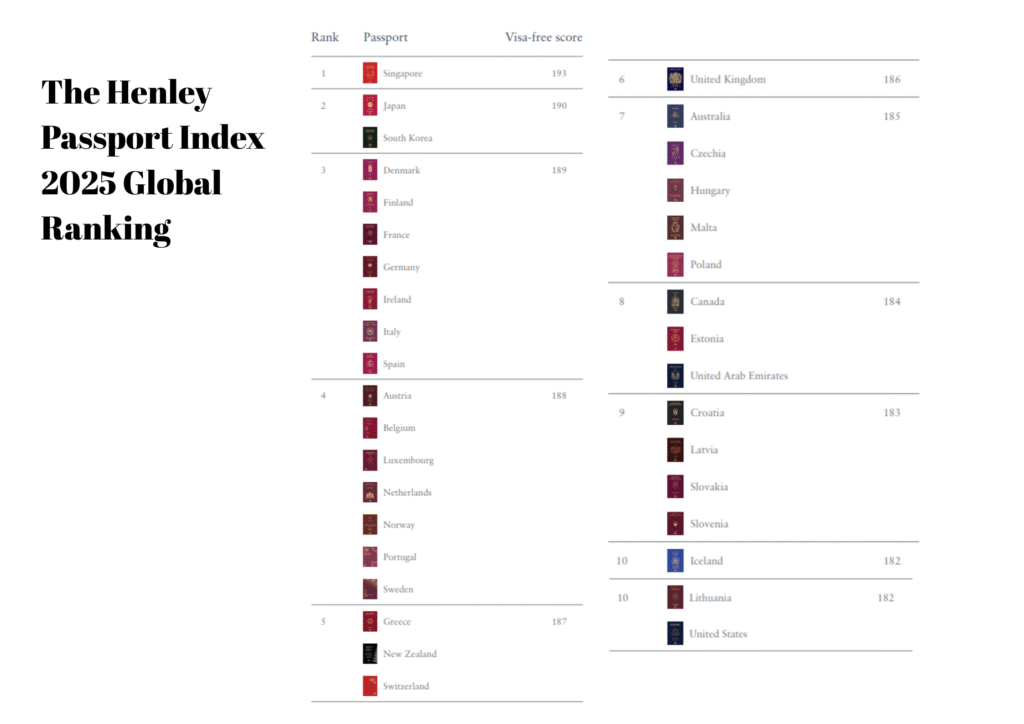
Here’s the full top 10:
- Singapore – 193 destinations
- Japan, South Korea – 190
- Denmark, Finland, France, Germany, Ireland, Italy, Spain – 189
- Austria, Belgium, Luxembourg, Netherlands, Norway, Portugal, Sweden – 188
- Greece, New Zealand, Switzerland – 187
- United Kingdom – 186
- Australia, Czech Republic, Hungary, Malta, Poland – 185
- Canada, Estonia, United Arab Emirates – 184
- Croatia, Latvia, Slovakia, Slovenia – 183
- Iceland, Lithuania, United States – 182
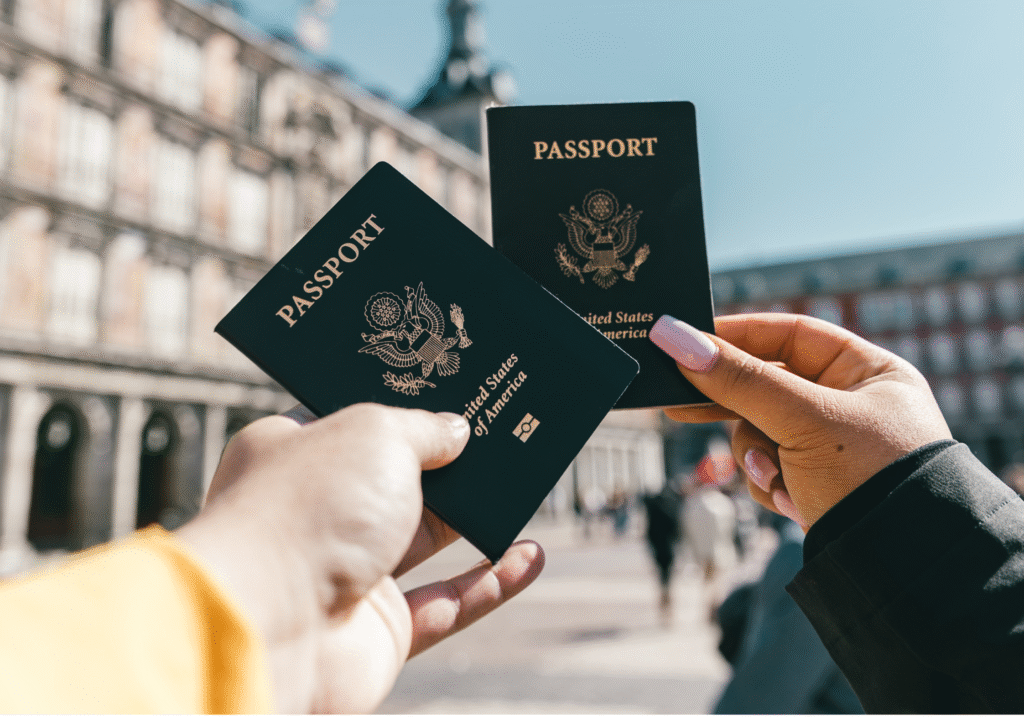
The U.S. passport dropped to 10th place in the 2025 Henley Passport Index—its lowest rank ever. It now offers visa-free access to 182 destinations, down from first place in 2014. Experts believe the decline is linked to stricter travel policies and a less active role in negotiating visa agreements. While countries like Singapore and South Korea are expanding access through diplomacy, the U.S. has become more inward-focused causing its passport power to slip.
The Philippine passport
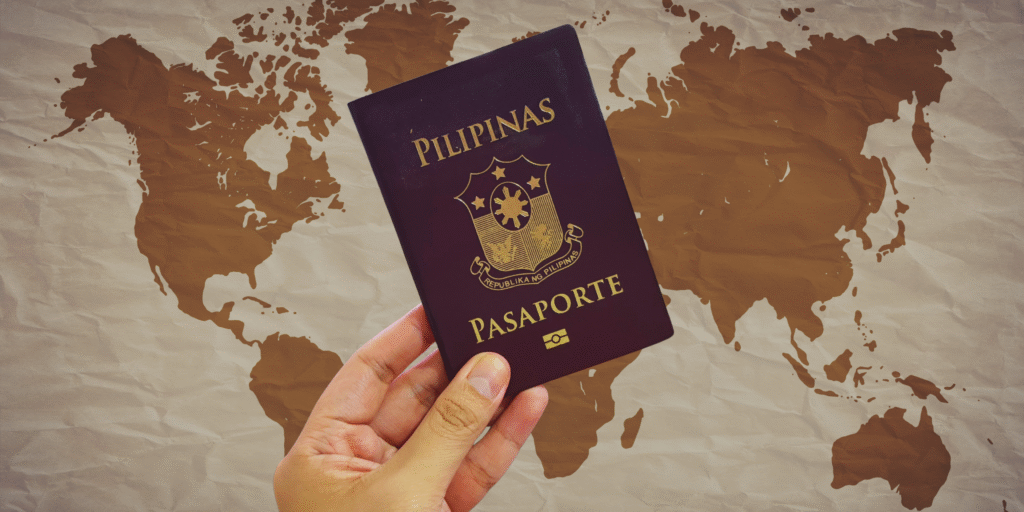
This year, the Philippine passport ranks 72nd, tied with Mongolia and Sierra Leone. That means Filipinos now have visa-free or visa-on-arrival access to 65 destinations, a slight increase from last year’s 73rd place, and a clear improvement from its low point at 83rd in 2021.
Here’s how our ranking has changed over the last decade:
| 2015 | 80th |
| 2016 | 76th |
| 2017 | 75th |
| 2018 | 75th |
| 2019 | 77th |
| 2020 | 74th |
| 2021 | 83rd |
| 2022 | 77th |
| 2023 | 78th |
| 2024 | 73rd |
| 2025 | 72nd |
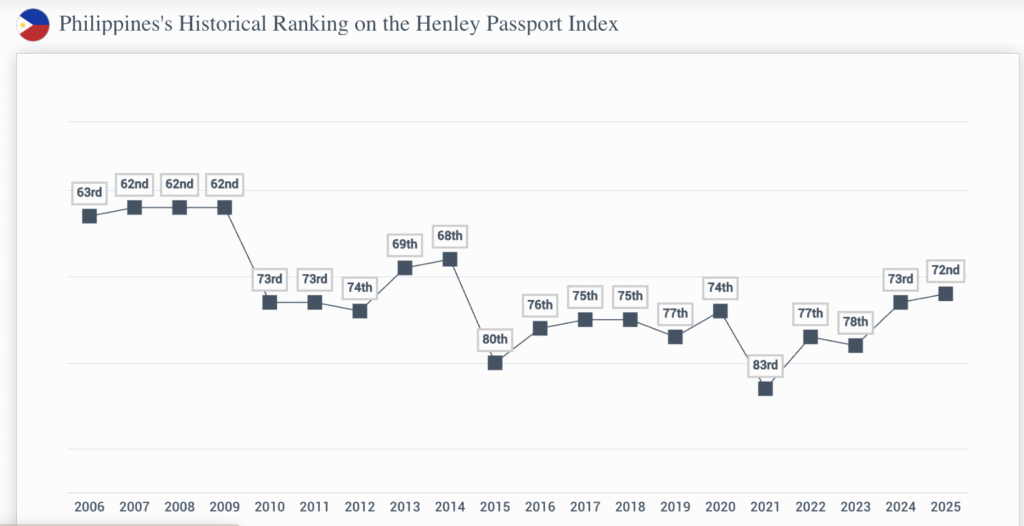
It’s a steady climb. But despite the “better” numbers, many Filipinos still struggle with the reality of international travel: the documents, the fees, the appointments and the uncertainty of approval.
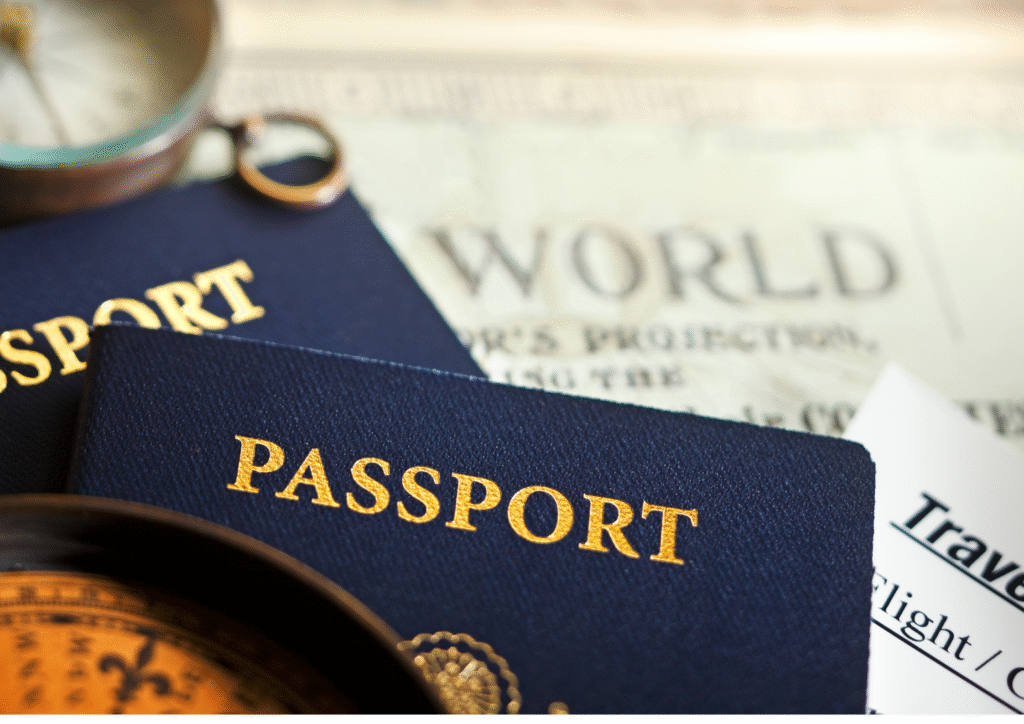
The real cost
Here’s what Filipino travelers face when applying for a tourist visa to top destinations:
| Country | Visa Type | Cost | Notes |
| Schengen (Europe) | Tourist Visa (Type C) | ~P7,500+ | Applicants pay a €90 (around P5,700) visa fee plus a ₱1,784 VFS service charge, with required documents including proof of funds, travel insurance, and confirmed bookings. |
| Japan | Tourist Visa (Single/Multiple) | P520–P2,000 | The visa itself is free, but a P520 fee is charged by Japan’s official visa center, and most applicants pay P1,000–P2,000 in agency handling fees. |
| South Korea | C-3 (Tourism/Business, ≤60 days) | P900 | The visa is free for Filipino nationals staying less than 60 days, but a P900 processing fee is collected by the Korea Visa Application Center (KVAC). |
| United States | B1/B2 Tourist Visa | P10,500–P24,700 | The standard visa fee is $185 (around P10,000), with an upcoming $250 (P14,200) “visa integrity fee,” and applicants must provide detailed financial proof |
| United Kingdom | Standard Visitor Visa (<6 months) | P10,400+ | The visa costs $177 (P10,400) for stays up to six months, with additional fees for longer stays; applicants must show financial capacity, return intent, and detailed travel plans. |
These are just the official fees, these numbers don’t reflect the full picture. Applicants still need to compile:
- Bank documents and financial statements
- Proof of employment, ITRs, or business permits
- Hotel and flight bookings (sometimes pre-paid)
- Courier fees, photo printing, and appointment costs
Not to mention the time invested during the process and emotional stress caused by the fear of getting rejected.
Why the Philippines ranks lower
If the Philippine passport has “improved”, why do we still lag behind most of Asia? There are a few grounded reasons:
High migration risk. Many destination countries, especially the US and EU member states associate the Philippines with higher overstay rates, prompting stricter visa screening. For example, US Department of Homeland Security data shows that Filipino B-1/B-2 visa holders (allows for both business and tourism purposes) had a 7.04% overstay rate in 2023, contributing to stricter visa screening protocols.
Past issues with document fraud. While our passport has improved in security, older trust issues take time to shake off.
Simply put, global mobility reflects global standing. All of this adds up to a ranking that, while improving, still leaves us behind.
Related story: What you need to know about Thailand’s digital arrival card before your next trip
Related story: What to know about South Korea’s e-Arrival Card before you fly
Related story: Europe 101: A guide for first-time travelers to the continent
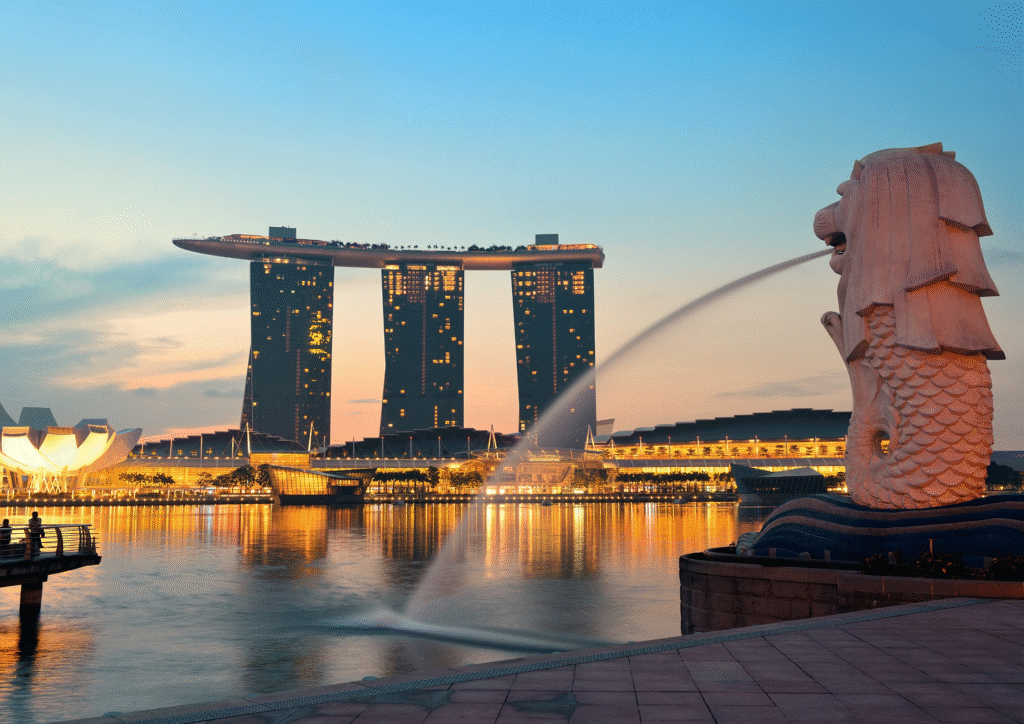
How we compare in the region
Here’s a look at visa-free destination counts across Southeast Asia:
- Singapore – 193
- Japan, South Korea – 190
- Malaysia – 181
- Thailand – 74
- Indonesia – 65
- Philippines – 65
- Vietnam – 52
- Myanmar – 45
And despite the gains, we’re still grouped with lower-access countries.
Yes, the Philippine passport is “stronger” than it used to be. But the process of traveling remains as demanding as ever. For ordinary Filipinos, it still requires proof of income, intent, identity, bookings, and ties to the homeland just to be considered for entry.
And so, while the numbers are “improving,” the cost of mobility remains high. Sadly, the journey will always begin not at the airport, but in a file folder full of documents.

